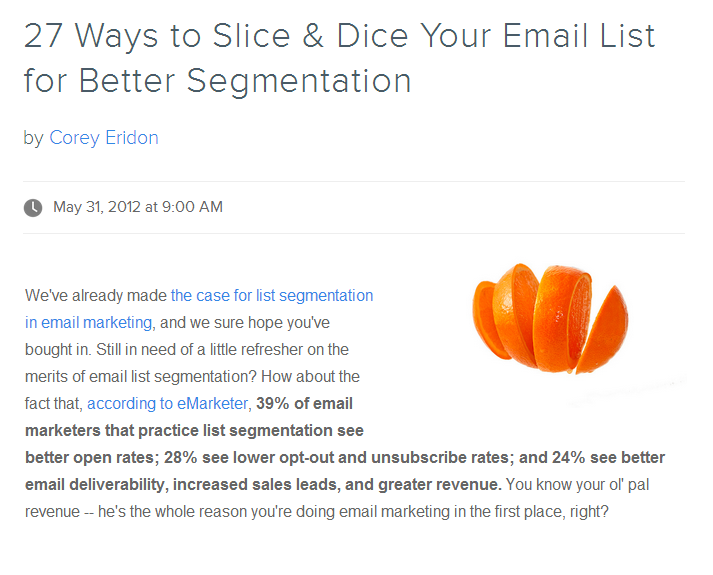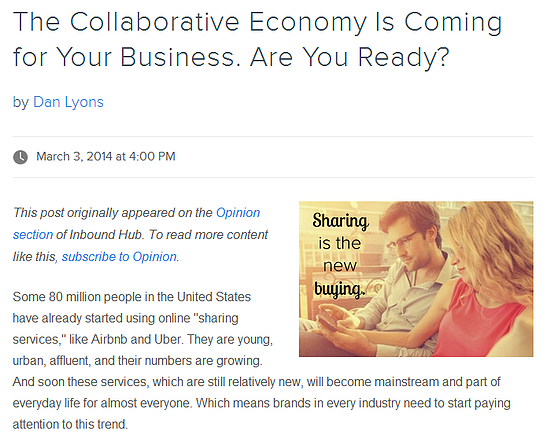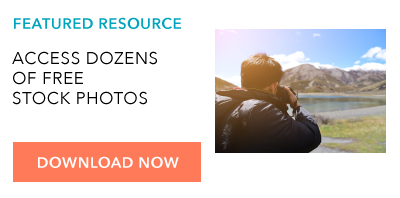By now, you've probably heard about the importance of visual content. Social networks are displaying images more prominently in their feeds, and visual content tends to generate much more engagement than text-based content. It's not surprising -- our eyes naturally gravitate toward images, and content is much easier to consume when it's broken up by visual components. Ever click through to an article, see a huge, daunting chunk of copy devoid of images, headers, or formatting, and completely give up on it before you've even started reading? Yeah ... me too. To prevent your blog posts from suffering that same fate, here are the six most important things to consider when you're selecting images for your blog content -- particularly the post's featured image like the one you see above. Let's get this one out of the way first, since it's probably the most important thing to consider in image selection. Are you even allowed to use it? That's right -- not all images on the web are fair game, and violating image copyrights can cost you and your company quite a bit of money. If you don't know the first thing about what images you can and can't use (or how to properly attribute them), this post will give you a good primer. In general, images licensed under Creative Commons are free as long as you properly attribute them (but you'll want to read this first). There are also free stock photo services available that allow you to download and use images free of charge. In fact, Getty just came out with access to some of its stock photos for free -- although it comes with a price. Just keep in mind that "free" doesn't necessarily equate to the biggest or best selection. If you're not satisfied, you'll want to consider purchasing a subscription to a stock photo service like iStockphoto or Getty (Thinkstock). To get you started, HubSpot has some free stock photos available for download here, here, and here! Is the image relevant to the content? It should have a fairly obvious tie-in to your post -- or even just the words in your post's headline. Think about it: The headline and featured image are usually the first thing someone sees in social and email promotion. If the connection between the two isn't clear, it can make your post look unprofessional, and it may negatively impact clickthroughs to your content. If you're having trouble choosing an image, one tip is to manipulate your post's headline to incorporate a word that naturally lends itself to a relevant, interesting image. Sometimes this just means swapping out an adjective that has some obvious imagery associated with it. For example, the following post may have nothing to do with oranges, but the image works because the post's headlines talks about "slicing and dicing" and "segmentation." Don't be afraid to get creative! It's not enough to be relevant. The image you choose should also be compelling. In other words, it should be eye-catching, interesting, appealing -- you get the picture, right? Remember, the first image in your blog post is usually what gets pulled in when people share links to your content on Facebook, Google+, and LinkedIn. Depending on your blogging software, it may also get pulled into your blog subscriber emails. The point is, your post's main image is often the first impression someone has of your content. If the one you choose is boring and unremarkable, you'll risk losing out on valuable clickthroughs. This may go without saying, but is the image high quality? How's the resolution? Is it pixelated? If so, you might want to keep searching. The image may have the potential to be remarkable, but if it's not high quality, it loses all credibility. Keep in mind that there's a fine line between pixelated images and images whose resolution is way too high. Choosing the latter will mean that your image files will take a long time to render, slowing down the post's overall page load time. And considering Akamai reports that 40% of people will abandon a web page if it takes more than 3 seconds to load, you definitely don't want to slow down your page load time with hefty images. Page load time depends on a number of variables in addition to the images on the page, but as a benchmark, try keeping your image sizes to under 100KB. If your image is any bigger, you'll want to use a photo editing tool like Photoshop to resize your images. (Note: You may already have a free photo editing tool already loaded onto your computer like Microsoft Office or Preview for Macs.) Keep in mind that resizing images in the HTML editor of your blogging platform won't do the trick since that only changes the image's appearance on the front-end rather than modifying the image's actual size. Instead, use an external photo editing tool, and upload the resized image to your post. As you're well aware, the desktop isn't the only screen you need to consider these days. Given the widespread usage of smartphones, tablets, and everything in between, you need to make sure the images you select are optimized for all screen sizes. This means that if you decide to overlay text on your images, you need to consider what that text will look like when the post is viewed on a smartphone. Will your readers have to squint to read it? What about that screenshot you decided to feature as your main image? Will it be so teeny tiny on mobile devices or tablets that the reader won't be able to tell what they're even looking at? These are all things you need to keep in mind. (Tip: HubSpot customers using the COS Blogging tool can easily preview what their blog posts will look like on different screen sizes using the "Preview With Device" feature in the blog editor to make sure images look good on all devices. For example, this is how the featured image in this post looks on mobile devices.) Considering the subject matter, there was quite a lot of pressure to choose a great image for this blog post. So ... how'd I do? What other image selection tips would you share? 
6 Things to Consider When Selecting the Perfect Blog Post Image
1) Do you have the right to use it?
2) Is it relevant?


3) Is it compelling?
4) Is it high quality?
5) Is it appropriately sized?
6) Is it optimized for all screen sizes?


Originally published Mar 17, 2014 11:00:00 AM, updated July 28 2017
Source: https://blog.hubspot.com/marketing/blog-post-image-selection-ht-list
Posted by: kathigodineze0193675.blogspot.com